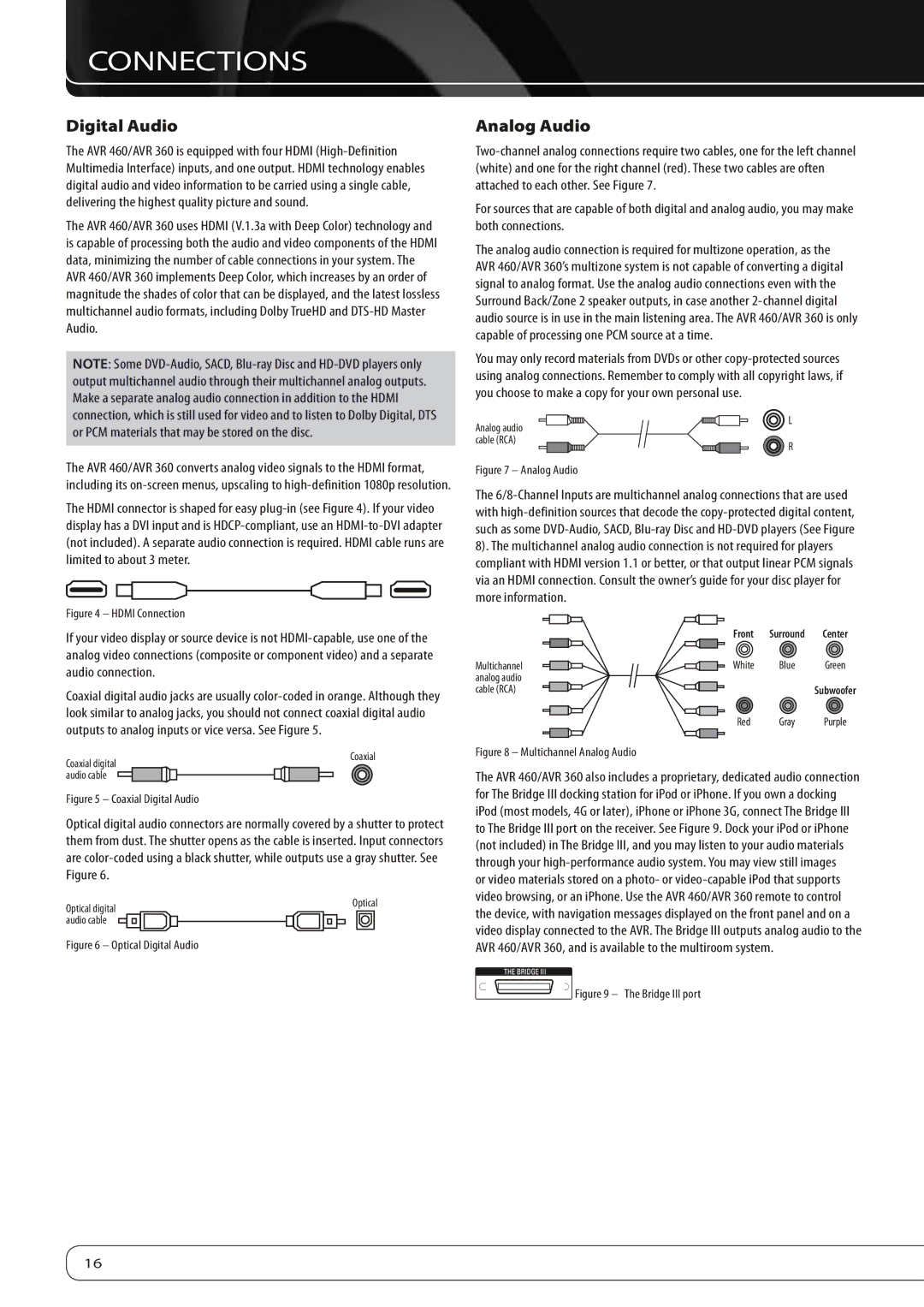
CONNECTIONS
Digital Audio
The AVR 460/AVR 360 is equipped with four HDMI
The AVR 460/AVR 360 uses HDMI (V.1.3a with Deep Color) technology and is capable of processing both the audio and video components of the HDMI data, minimizing the number of cable connections in your system. The AVR 460/AVR 360 implements Deep Color, which increases by an order of magnitude the shades of color that can be displayed, and the latest lossless multichannel audio formats, including Dolby TrueHD and
NOTE: Some
The AVR 460/AVR 360 converts analog video signals to the HDMI format, including its
The HDMI connector is shaped for easy
Figure 4 – HDMI Connection
If your video display or source device is not
Coaxial digital audio jacks are usually
Coaxial digital | Coaxial |
| |
audio cable |
|
Figure 5 – Coaxial Digital Audio
Optical digital audio connectors are normally covered by a shutter to protect them from dust. The shutter opens as the cable is inserted. Input connectors are color-coded using a black shutter, while outputs use a gray shutter. See Figure 6.
Optical digital | Optical |
| |
audio cable |
|
Figure 6 – Optical Digital Audio
Analog Audio
For sources that are capable of both digital and analog audio, you may make both connections.
The analog audio connection is required for multizone operation, as the AVR 460/AVR 360’s multizone system is not capable of converting a digital signal to analog format. Use the analog audio connections even with the Surround Back/Zone 2 speaker outputs, in case another
You may only record materials from DVDs or other
Analog audio | L |
| |
cable (RCA) | R |
|
Figure 7 – Analog Audio
The
| Front | Surround | Center |
Multichannel | White | Blue | Green |
analog audio |
|
|
|
cable (RCA) |
|
| Subwoofer |
| Red | Gray | Purple |
Figure 8 – Multichannel Analog Audio
The AVR 460/AVR 360 also includes a proprietary, dedicated audio connection for The Bridge III docking station for iPod or iPhone. If you own a docking iPod (most models, 4G or later), iPhone or iPhone 3G, connect The Bridge III to The Bridge III port on the receiver. See Figure 9. Dock your iPod or iPhone (not included) in The Bridge III, and you may listen to your audio materials through your
or video materials stored on a photo- or
 Figure 9
Figure 9 – The Bridge III port
16
